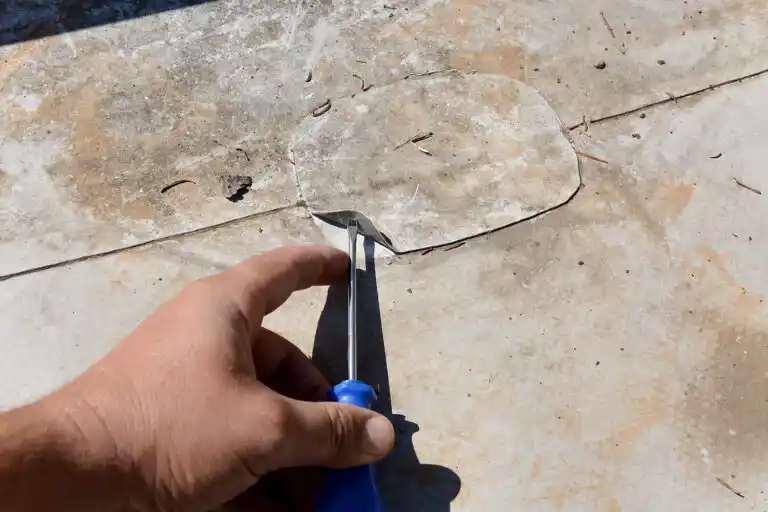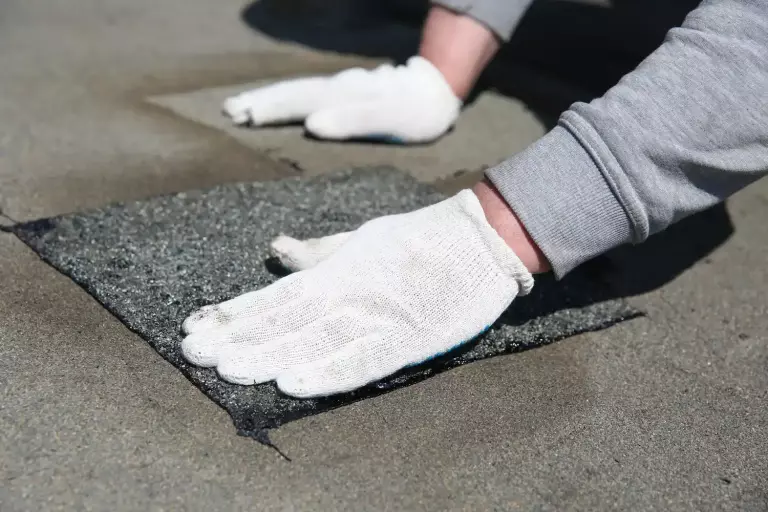Knowing the basics of how to patch a roof leak as soon as you notice it is key to mitigating damage and preventing unwanted risk in the structure of your home. Let’s see the leading causes of roof leaks and the most practical DIY fixes to prevent a leak from getting bigger!
CAUSES OF ROOF LEAKS
What causes a roof leak? Can a garden hose and pry bar really fix my issues? Finding out the causes of why you may have a leak can help homeowners find immediate solutions that will not break the bank.
OLD AGE
One of the most common reasons for a leaky roof is old age. Roofing material can break down over time, leading to leaks, holes, cracks, and curling shingles. You can help prevent roof leaks from old age through maintenance, roof repair, removing debris, and getting roof inspections every few years.
DAMAGED FLASHING
If your flashing was improperly installed or damaged in an event, such as humid/warm weather or a storm, it could cause damaged flashing that leads to weak points and instability in the roof. Flashing can be damaged by exposure, deterioration, and impact on the structure.
BROKEN TILES
The third reason your roof may leak is due to damaged roof tiles. The roof tiles help protect against impact and weather in your home — if roofing tiles are damaged, they can crack or fall off completely, leading to dampness, moisture build-up, condensation, and rotting.
DAMAGED ROOFING UNDERLAYMENT
If your roof has been damaged under the initial protective layer, this can cause moisture in the home, gutter cracks, and pooling water, leading to leaks inside your home.
WRONG ROOFING MATERIALS
Another common reason for leaking in your home is due to improper installation of roofing materials, cheap material, or the wrong material for your climate and home. For example, if your house does not have a double-layer of waterproof protection and you live in a wet climate, this can cause leaks.
HOW TO PATCH A ROOF
If you notice your roof is leaking, you need to find out the best ways to quickly patch the roof to prevent any more damage, emergency situations, and large-scale instability in your home.
USE A TARP
The first way to quickly patch a roof is to use a tarp to cover the spot that is leaking. Although this is not a long-term solution, the tarp will catch the water and prevent the moisture from getting into your house. Use a hammer and roofing nails to secure the edges of the tarp and prevent it from moving.
USE ROOFING CEMENT
The second way to patch a roof is to use roofing cement to block any cracks, holes, or leaks in your roof. Get rid of any debris or large particles from your roof, and then use the roof cement to secure the leak.
USE A CAULK GUN
The third method to patch a roof is to use silicone gel or a caulk gun to plug a small gap or hole in your roof. Even though this is not a long-term fix, it can help stop leaks as soon as you notice them.
USE RUBBER ROOF SEALANT
The fourth method to help eliminate leaks in your house is using a rubber sealant to block leaks and holes. If you have a large-scale leak, try to use both a rubber boot and a tarp to stop the leaks and prevent water damage. For small leaks, use the rubber sealant and spray it on the damaged area.
USE ROOF FLASHING
The next way to prevent any leaks from growing in your home is to use aluminum flashing to cover leaking spots in your home and prevent further damage. One of the most common spots where you can use new flashing in your house is the chimney, edge, siding, or attic.
USE ROOF REPLACEMENT SHINGLES
For a more long-term fix, you can try to use roof replacement shingles on the leaking area. Although you may need a professional to do the official installation process, you can use new shingles to replace any missing shingles showing signs of age or deterioration.
Some shingles may be warped, broken, cracked, or curling, meaning that you need to replace these as soon as possible to identify the leak’s location and replace the old shingle. Identifying curled back shingles and old shingles is key to preventing a breakdown of most roofs.
USE TAR PAPER
You can also use tar to replace a shingle or high-density fiberboard. This is one of the easiest ways to repair the edge of your roof. Use a nail to secure the paper while repairing the leak in your house. You may need to use a pry bar to remove a generous amount of the roofing structure.
USE SHEET METAL
The following way that homeowners can fix a leak in their house is to use a DIY shingle from metal or plastic that can cover the gap in the house. Measure the right size of the surrounding shingles to see how big of a piece of metal to use to replace the asphalt shingles. You can cut the right size of metal using a utility knife or putty knife to measure the new shingle.
USE PIPE FLASHING
The last way to stop a leak in your house ASAP is to use pipe flashing to replace old flashing or step flashing. If your leak is coming from the area around your water system or pipes, getting a new pipe flashing boot is the best way to prevent any moisture from soaking into your ceiling. If you need to remove the flashing, use a pry bar or flat bar to replace damaged flashing or roof sheathing.
FIXING A LEAKY ROOF: CONCLUSION
Do you have a leaky roof? Are your asphalt shingles breaking and cracked? What are the steps for repairing a leaky attic?
Although you may think you need a professional roofer or roofing contractor to repair a leak, you can usually do the repair effectively on your own. Sometimes, replacing curled shingles, fixing nail heads, and peeling back corners of neighboring shingles can be done on your own!
Whether you have asphalt shingles or curled shingles, learning the basic DIY steps of how to patch a roof is key. Although there are different roof types, the typical repair steps are the same when repairing a leak in your home.




